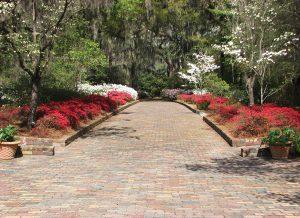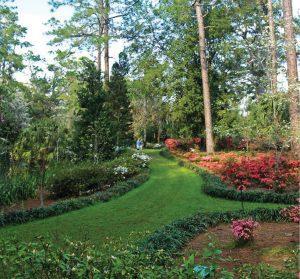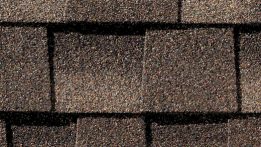By Cherie Graves,
Florida Dept. of Environmental Protection
If you live in Tallahassee, you likely know that Maclay Gardens is a favorite venue for weddings, that Lake Hall is an excellent picnic and cool-down spot for hot summer days, that Lake Overstreet trails provide lake views for hikers, bikers and equestrians, that the high bloom season for the garden runs from January 1 – April 30. What you might not know is that…
1.
The property associated with Alfred B. Maclay Gardens State Park was part of the Lafayette Land Grant, given by the US government to Marquis de Lafayette for his assistance with the Revolutionary War. Lafayette never visited Tallahassee.
2.
In 1882, Frenchman Emile Dubois bought 27 acres and established a vineyard. By 1890, the land was producing 4,000 gallons of wine a year. Dubois sold the property when Leon County voted to go dry in 1904.
3.
An entrepreneur from Chicago bought the property for quail hunting and built a lodge, which the Maclays updated when they bought the place.
4.
Alfred B. Maclay bought the quail hunting plantation along with other property. He named the 3,760 acre estate “Killearn” after his family’s ancestral village in Scotland.
5.
A time capsule is buried beneath a memorial stone near the garden entrance. Buried on Florida State Park’s 60th anniversary, the time capsule will be opened on the state park’s 100th anniversary in 2035.
6.
The bricks along the walk leading from the entrance gate came from an old street in Tampa. The bricks were made by different companies and labeled with their origins – Baltimore, Augusta, Birmingham. The walkway from the garden gate was a clay surface until the bricks were laid in 1968.
7.
The Maclays “shopped local” when transforming the former hunting lodge into their winter home. The library is paneled with cypress that was milled in Perry, about 50 miles from Tallahassee. The library floor is longleaf yellow pine that was milled from trees on the property.
8.
The original plant of the variety “Aunt Jetty” was the first camellia planted in the Maclays’ garden. The plant grew in the yard of the old Gamble home (located on College Avenue where the First Baptist Church now stands) until 1924, when Mr. Maclay bought the 80-year-old plant for $75, big bucks back in the day. The camellia graced Maclay Gardens until 2011. It was estimated to have been nearly 200 years old. In its place grows the next generation Aunt Jetty, propagated through air layering, to add summer shade and winter blooms to the garden.
9.
Mr. Maclay scored a della Robia on his travels in Italy. The blue and white plaque in the Walled Garden is a medallion of infants, created by Andrea della Robia – nephew, assistant and pupil of Luca della Robia, a sculptor from Florence famous for his terracotta roundels. The American Academy of Pediatrics based their logo design on one of the roundels on the Hospital of the Innocents in Florence, Italy. Constructed during the early Renaissance, the building features glazed blue terracotta roundels (similar to the one at Maclay) designed by Andrea della Robia.
10.
Ms. Maclay, evidently, believed that art imitates life. The Walled Garden’s fountain boasts a bronze century plant. Ms. Maclay sent sculptor Alexander Stoller a live century plant to his New York studio to use as his model.
So now you know ten things more about your local state park.
One more thing to know – the park hosts several annual events that include the Tour of Gardens in May, Kids Fishing Day in June, Scarecrows and Jazz in the Gardens in October and Camellia Christmas in December.
The Florida Department of Environmental Protection manages 171 state parks and trails. Find information about upcoming events and ranger programs online at FloridaStateParks.org. Better still, drop by for a visit. Maclay Gardens is located at 3540 Thomasville Road, right here in Tallahassee. ![]()








